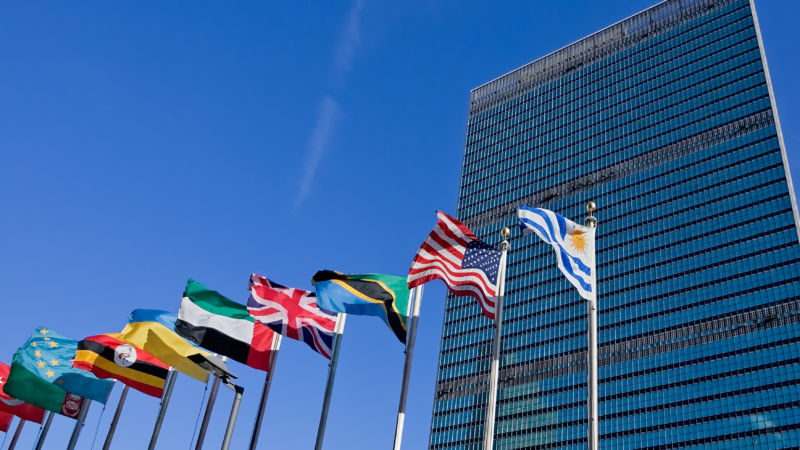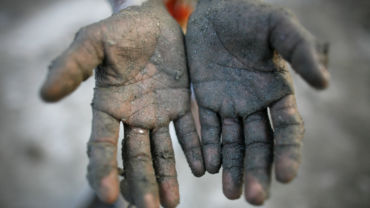Human trafficking, a form of modern-day slavery, is one of the most pressing human rights issues of our time, but there are ways we can fight it
Human trafficking undermines and impacts local communities, regions, and countries around the world. Yet, despite our best efforts, human trafficking persists in various forms. From sex trafficking in illegal brothels to forced labor on fishing vessels operating in international waters, and forced labor in global supply chains stemming from China, human beings are exploited through force, fraud, and coercion.
Though the exploitation of human beings has existed and persisted for millenniums, the formal acknowledgment and terminology are relatively new. Twenty years ago, with the passage of the Palermo Protocols and the U.S. Trafficking Victims Protection Act, governments worldwide set forth on a mission to eradicate all forms of human trafficking. Last year marked the twentieth anniversary of the passage of the landmark protocols and legislation — and while having much to celebrate, there is so much more to do.
While the prevalence of human trafficking is not fully understood, the International Labor Organization (ILO) gives us our best estimates on the current scope of the issue. Today, according to the ILO, 40.3 million people are living in modern slavery. Of those, 24.9 million are exploited in various forms of trafficking, including sex trafficking and forced labor. Tragically one-in-four are children.
Though the exploitation of human beings has existed and persisted for millenniums, the formal acknowledgment and terminology are relatively new.
The magnitude of the issue and scope of the problem can be overwhelming and even paralyzing. But imagine the possibility for impact if we all pushed through the uncomfortableness of addressing a dark issue and worked strategically on a problem as complex as human trafficking. What if we right-sized our collective response to the enormity of the problem?
To date, the public sector and civil society have tackled this complex problem primarily through the hard work and dedication of non-profit organizations, government agencies, and policy leaders. Yet, human trafficking persists and flourishes.
Human trafficking flourishes because it is an economically motivated crime, driven by high demand for cheaper products and unlawful sexual services in the western world. Today, this human rights issue lacks an equal response to the problem. Traffickers exploit systems and people for maximum profit in the formal and informal shadow economy. Further, traffickers are operating and laundering their profits and ill-gotten gain largely undetected through our financial systems.
Traffickers are innovative and ahead of the curve as it relates to our efforts to detect, disrupt, and dismantle crimes of human exploitation. As such, we need to re-think what the next 20 years of anti-trafficking efforts look like and deploy an evolved approach that will yield a paradigm shift with durable and capable solutions.
Historically, when we think of frontline responders, we identify law enforcement, social workers, and medical providers to lead prevention, protection, and prosecution efforts. Still, we would do well to think strategically about how we can continue these existing efforts while also illuminating the networks of bad actors, coupled with the parallel track of financial information. Specifically, we should leverage our capabilities to identify bad actors’ networks and “follow the money” to target human trafficking. The ILO estimates human trafficking generates $150 billion in profits annually.
We need to re-think what the next 20 years of anti-trafficking efforts look like and deploy an evolved approach that will yield a paradigm shift with durable and capable solutions.
To stop this flow of funds to criminals, we need to tap the abilities of forensic accountants, data scientists, and analysts. Then, armed with an additional workforce and resources, we will achieve a solution that matches the magnitude of the issue and the enormity of human trafficking.
Here at Thomson Reuters, we’re doing just that. We’re pulling together the brightest minds, newest tools, and advanced technology to go upstream in a new and innovative way and make a serious dent in human trafficking, promote awareness, and share best practices. But we can’t do this work alone. We need allies, partners, and collaborators to work with us and strategically divide up the share of responsibility, working together and in tandem as force multipliers.
Today, on World Day against Human Trafficking, we hope you’ll join us and dream with us on how we can leverage our collective resources and expertise to eradicate human trafficking. When we lock arms to advance this worthy work, we will truly achieve our societal mandate to protect victims, seek justice for survivors, and prevent the crime from occurring in the first place. By bringing together the private and public sectors, we can and will create a safe and more secure world — without exploitation, where all are truly free.







